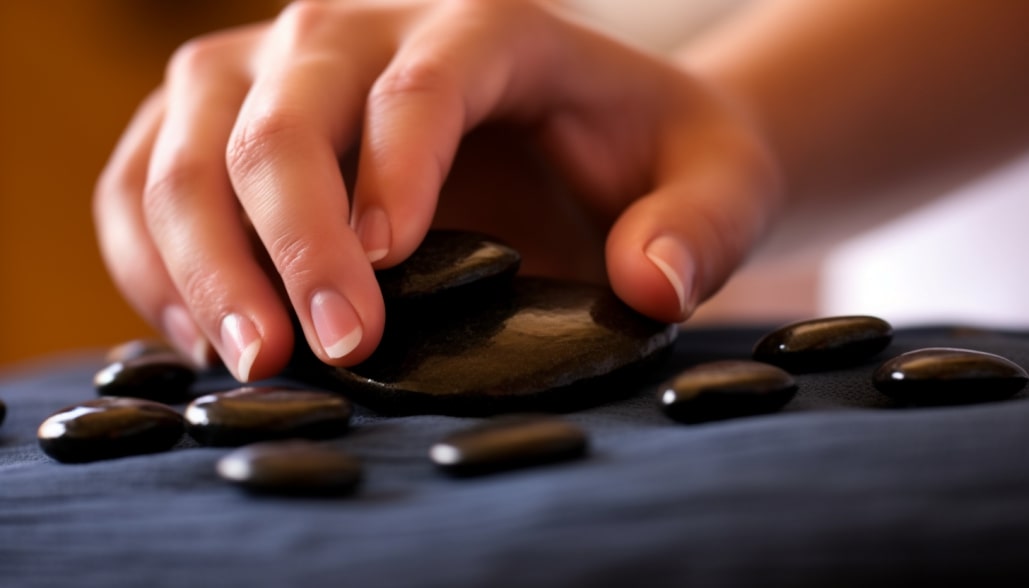In an age where self-care is no longer a luxury but a necessity, understanding your options for relaxation and rejuvenation is vital. One such option that often comes to mind is massage therapy. But within this realm, there are so many modalities to choose from, each with its unique techniques and benefits. How do we navigate this vast sea of therapeutic touch? In particular, the Swedish Massage often stands as a quintessential standard, yet how does it compare to other popular types? This article aims to decode the intricacies of Swedish Massage, explore its benefits and drawbacks, and offer a comprehensive comparison with other prevalent massage modalities. Ready to embark on this enlightening journey? Let’s dive right in!
Understanding Swedish Massage
Swedish Massage, often considered the ‘classic massage,’ is one of the most popular and widely recognized forms of massage therapy worldwide. Rooted in Western concepts of anatomy and physiology, it utilizes a few different techniques: effleurage (gliding strokes), petrissage (kneading), friction, and vibration. These techniques aim to relax the entire body by rubbing the muscles with long gliding strokes, to promote circulation in your body. But why is Swedish Massage often the go-to modality for many? It’s a gentle form of massage that’s excellent for beginners, making it an accessible gateway to the world of therapeutic touch. It’s also particularly effective for stress relief, offering a reprieve from our fast-paced lives. By increasing circulation, you increase the level of oxygen in the blood, decrease muscle toxins, improve flexibility, Swedish Massage brings about overall relaxation and rejuvenation.
Yet, like anything else, Swedish Massage isn’t a one-size-fits-all solution. While it’s generally safe for most, it might not cater to specific needs or conditions, such as certain medical conditions. This is where understanding other massage modalities becomes crucial.
Benefits and Drawbacks of Swedish Massage
Understanding the benefits and drawbacks of Swedish Massage can help you make an informed decision about whether this modality is right for you.
Benefits of Swedish Massage
- Stress Relief: Swedish Massage is known for its soothing and relaxing effects. It can help to alleviate stress and anxiety, promoting a sense of calm and well-being.
- Improved Circulation: The long, sweeping strokes of Swedish Massage can help to improve blood and lymphatic circulation, enhancing overall body function.
- Muscle Relaxation: Swedish Massage can help to relax tense muscles, reducing pain and improving mobility.
- Enhanced Sleep Quality: The relaxation induced by Swedish Massage can lead to better sleep, which is crucial for overall health.
Potential Drawbacks of Swedish Massage
- Not as Focused on Deep-Seated Issues: While Swedish Massage can help with mild muscle tension, it may not be as effective for deep-seated aches and pains as modalities like Deep Tissue or Sports Massage.
- May not be Suitable for Everyone: While generally safe, Swedish Massage might not be suitable for individuals with certain health conditions. Always consult your healthcare provider before starting any new therapy.
Key Takeaways: Swedish Massage is a gentle, relaxing form of massage that’s excellent for beginners but may not cater to specific needs or conditions.
Comparing Swedish Massage to Other Popular Modalities
While Swedish Massage is a wonderful form of therapy, it’s just the tip of the massage iceberg. There are numerous other modalities, each with its unique techniques and benefits, tailored to different needs and preferences.
Deep Tissue Massage vs. Swedish Massage
Deep Tissue Massage, as the name suggests, targets the deeper tissue structures of the muscle and fascia. Unlike Swedish Massage, which focuses on relaxation, Deep Tissue Massage is more about rehabilitation. It’s particularly effective for chronic aches and pains, targeting areas of tension or injury. While both forms of massage use some similar strokes, the pressure in Deep Tissue Massage is more intense, often focusing on problem areas. So if you’re seeking more than relaxation and have some chronic issues to address, Deep Tissue Massage might be the right fit.
| Swedish Massage | Deep Tissue Massage | |
|---|---|---|
| Pressure | Light to moderate pressure | More forceful technique with extra pressure |
| Technique | Long strokes with light-to-firm pressure | Similar to Swedish massage, but goes farther and is intended for a different purpose |
| Intended Use | Relaxation and tension relief | Targets deep muscle tension and healing muscle strain |
| Focus Areas | Tight muscles caused by daily activities such as sitting at the computer or exercising | Athletes, runners, people with injuries |
| Similarities | Basis for many deep tissue techniques, similar strokes and techniques | Many techniques are based on Swedish massage, similar strokes and techniques |
| Benefits | Ultimate rejuvenation, relaxation, and stress reduction | Releases tension deep in the muscles and connective tissues |
Key Takeaway: Deep Tissue Massage targets deep-seated chronic aches and pains, providing a more intense pressure compared to Swedish Massage.
Myofascial Release vs. Swedish Massage
Myofascial Release is another unique form of therapy that differs markedly from Swedish Massage. Often referred to as a “manual therapy,” Myofascial Release targets the fascia, the connective tissue that surrounds muscles, bones, and organs, aiming to relieve pain and increase mobility. Unlike Swedish Massage, where the emphasis is on relaxation and easing muscle tension, Myofascial Release focuses on releasing tension in the fascia.
The technique involves applying gentle, sustained pressure on the myofascial tissue restrictions. The therapist uses their hands, knuckles, or other tools to slowly stretch the fascia, helping to rectify misalignments in the body and restore mobility. This therapeutic approach is more targeted and specific compared to the broad strokes often used in Swedish Massage.
| Myofascial Release | Swedish Massage | |
|---|---|---|
| Technique | Applies sustained pressure on targeted areas of connective tissue (fascia) that surround your muscles and bones | Rubs the muscles in long, gliding strokes in the direction of blood returning to the heart |
| Lubrication | No lubricant is added to the skin | Uses massage lotions or oils to prevent friction |
| Pressure | Applies deep, gentle sustained pressure into the fascial | Light to moderate pressure |
| Duration | Maintains pressure for three to five minutes at a time in the targeted area | Uses long strokes with light-to-firm pressure |
| Purpose | Releases the restriction in the connective tissue so that you have greater range of motion and less pain | Designed to relax the entire body |
| Ideal for | Anyone with tension or tired muscles caused by exercise, sleeping in an odd position, and just ordinary daily stresses | Relaxation and tension relief |
| Benefits | Greater range of motion and less pain | Energizes the body and improves overall health |
| Use of Massage Lotions or Oils | Does not use massage lotions or oils | Uses massage lotions or oils to prevent friction |
Key Takeaway: Myofascial Release is a more targeted, specific form of therapy focusing on releasing tension in the fascia and enhancing mobility, contrasting with the more general, passive approach of Swedish Massage.
Hot Stone Massage vs. Swedish Massage
Hot Stone Massage introduces a unique element into the massage mix: heat. During this therapy, heated stones are placed on different areas of the body. The heat from the stones penetrates deep into your muscles, providing a deep feeling of relaxation and warming up tight muscles, allowing the therapist to work more deeply, more quickly. While Swedish Massage also aims at relaxation, it doesn’t utilize heat in the same way. If you enjoy the comforting feeling of warmth and seek deep relaxation, Hot Stone Massage might be a worthwhile exploration.
Key Takeaway: Hot Stone Massage uses heated stones to provide a deeper feeling of relaxation and targets tight muscles, adding an element of heat not found in Swedish Massage.
Sports Massage vs. Swedish Massage
Sports Massage is designed specifically for athletes, focusing on areas of the body that are overused and stressed from repetitive and often aggressive movements. While it shares some techniques with Swedish Massage, the key focus of Sports Massage is to prepare the athlete for peak performance, drain away fatigue, relieve swelling, reduce muscle tension, and promote flexibility. It’s often more vigorous than Swedish Massage, which is generally more relaxing and less targeted. If you’re an athlete or have specific performance-related needs, Sports Massage might be a more suitable option.
Key Takeaway: Sports Massage is specifically designed for athletes, focusing on relieving stress from repetitive movements and enhancing performance, unlike the more relaxation-focused Swedish Massage.
How to Choose the Right Massage Modality
With a myriad of massage modalities available, it can be overwhelming to choose the right one for you. Here are some factors to consider when making your decision:
Consider Your Physical Condition
Evaluate your physical needs and preferences. If you’re seeking relaxation and have no specific issues to address, Swedish Massage might be a perfect fit. However, if you have chronic pain or specific areas of tension, Deep Tissue Massage or Sports Massage may be more suitable. Understanding your body’s needs is the first step to selecting the right modality.
Key Takeaway: Assess your physical condition and specific needs to help determine the most appropriate massage modality for you.
Consider Your Comfort Level
Your comfort during a massage session is paramount. If you’re new to massage or prefer a more gentle approach, Swedish Massage is a great starting point. On the other hand, if you enjoy a more vigorous, interactive experience, Thai Massage may be the right choice. Additionally, consider your comfort with undressing, as some modalities like Swedish Massage typically require partial or full disrobing, while others like Thai Massage do not.
Key Takeaway: Evaluate your comfort level with various massage techniques and disrobing to ensure a relaxing and enjoyable experience.
Consider Your Goals
What do you hope to achieve from your massage? Are you seeking relaxation, pain relief, or increased flexibility? Identifying your goals will help you make an informed decision about the right massage modality. For example, if your primary goal is relaxation, Swedish Massage or Hot Stone Massage might be ideal. If you’re an athlete looking to enhance your performance, Sports Massage could be a better fit.
Key Takeaway: Determine your massage goals to select the modality that aligns with your desired outcome.
The Art of Massage: More than Just Relaxation
Massage therapy transcends mere relaxation. It’s a holistic approach to wellness, considering the mind, body, and spirit in the healing process. The power of touch in massage therapy can play a crucial role in recovery, mental wellbeing, and overall quality of life.
The Holistic Approach of Massage Therapy
The holistic approach of massage therapy is centered around the belief that our physical, mental, and emotional well-being are interconnected. This means that when we address one area, it can have a positive ripple effect on the others. Swedish Massage is a perfect example of this holistic philosophy in action.
Through its holistic approach, Swedish Massage can serve as a powerful tool for overall wellness. It beautifully demonstrates how the body and mind are intertwined, and that nurturing one aspect can positively influence the other.
Key Takeaway: Massage therapy is a holistic approach to wellness, addressing not just physical but also mental and emotional well-being.
The Power of Touch in Healing and Recovery
The act of touch itself can have therapeutic effects. Studies have shown that massage can reduce cortisol levels (a stress hormone) and increase oxytocin levels (a hormone associated with bonding and trust). These hormonal shifts can create a sense of calm and connection, further enhancing the benefits of massage therapy.
These hormonal shifts stimulated by the power of touch are particularly beneficial in a Swedish massage context, given its focus on relaxation and stress relief. The recipient can leave the massage session not only with a rejuvenated body but also with a tranquil and more serene mind.
Key Takeaway: The power of touch in massage therapy plays a significant role in healing and recovery by influencing stress and trust hormones.
Maximizing the Benefits of Your Chosen Modality
Choosing the right massage modality is just the beginning of your wellness journey. To truly unlock the full potential of your chosen massage, preparation and aftercare are key.
Pre-massage Tips
To ensure a fulfilling massage experience, consider the following tips before your session:
- Hydrate Well: Hydration before a massage can help to enhance the benefits of your session, helping your muscles to be more receptive to treatment1.
- Eat Lightly: Eating a light meal before your massage can prevent discomfort during your session. It’s best not to go in on a full stomach.
- Arrive Early: Arriving early allows you time to relax, fill out any necessary forms and discuss any concerns with your therapist. This sets the tone for a calm, unhurried experience.
Key Takeaway: Proper hydration, light eating, and early arrival can enhance your pre-massage experience and make your session more effective.
Post-massage Tips
The benefits of massage can continue long after the session ends. Here’s how to prolong these benefits:
- Hydrate, Again: Drinking plenty of water after your massage can help flush out any toxins released from your muscles during the massage.
- Rest and Relax: If possible, avoid strenuous activities post-massage. This is your body’s recovery time, so allow it to rest.
- Listen to Your Body: You may feel a little sore after your massage, especially if it was a Deep Tissue Massage. If this happens, try a warm bath or a heat pack to soothe your muscles.
Key Takeaway: Hydration, rest, and body awareness can extend the benefits of your massage and aid in your body’s recovery post-session.
Invigorate Your Senses: Discover the Power of Massage
Embarking on a journey with massage therapy can truly invigorate your senses and offer a fresh perspective on wellness. Whether it’s the gentle, soothing strokes of a Swedish Massage or the dynamic stretches of a Thai Massage, there’s a world of therapeutic touch waiting to be discovered.
Recap of Key Takeaways
We’ve explored the multifaceted realm of massage therapy, comparing Swedish Massage to other popular modalities and unlocking the full potential of your chosen modality with pre and post-massage tips. Here are the key takeaways:
- Swedish Massage is a gentle, relaxing form of massage, great for beginners and those seeking stress relief.
- Deep Tissue Massage targets deep-seated chronic aches and pains.
- Myofascial Release focuses on releasing tension in the fascia.
- Hot Stone Massage utilizes heated stones for deep relaxation and muscle tension relief.
- Sports Massage is specifically designed for athletes, focusing on enhancing performance.
- Pre and post-massage care are crucial in maximizing the benefits of your chosen modality.
Encouragement to Explore the Right Massage Modality
As we conclude this enlightening journey, remember: the power to enhance your wellness lies in your hands. Understanding your body’s needs, your comfort level, and your goals can guide you to the right massage modality. Don’t hesitate to explore, ask questions, and discover the transformative power of touch. Your journey to wellness begins with the first step, and there’s no better time to take it than now!
FAQs
Can I combine Swedish massage with other modalities?
Yes, you certainly can. Many massage therapists are skilled in multiple modalities and can blend techniques to create a session tailored to your needs. For example, it’s not uncommon for a session to include elements of Swedish, Deep Tissue, and other types of assage. Always communicate with your therapist about what you’re hoping to achieve from the session so they can create the best experience for you.
What should I wear during a Swedish massage session?
During a Swedish massage, you undress to your comfort level. Most people undress completely, while others choose to keep their undergarments on. You’ll be covered with a sheet while lying on the massage table, and the therapist will only uncover the part of your body being worked on. The key is to ensure you’re comfortable, so wear (or don’t wear) whatever makes you feel at ease.
How often should I get a Swedish massage?
The frequency of massage sessions can vary widely depending on your goals, lifestyle, and general health. If you’re seeking massage for stress relief and relaxation, a monthly session might suffice. If you’re using massage to address chronic pain or recover from an injury, you might need sessions more frequently, such as weekly or bi-weekly. Always consult with your therapist or healthcare provider to determine the best frequency for your specific needs.
Are there any conditions where Swedish massage should be avoided?
While Swedish massage is generally safe, there are certain conditions where it should be avoided or used with caution. Certain acute injuries, illnesses, and chronic diseases are not safe for massage therapy. Always consult with your healthcare provider before starting any new treatment, including massage.
Can Swedish massage help with chronic pain?
Indeed, Swedish Massage can be beneficial for managing chronic pain. The modality’s focus on promoting circulation and relieving muscle tension can aid in pain reduction. However, the effectiveness may vary depending on the source and nature of the chronic pain. For more severe or deep-seated pain, other modalities like Deep Tissue or Neuromuscular Massage might be more appropriate. As always, it’s essential to discuss your health history and goals with your massage therapist and healthcare provider to ensure the best treatment approach.
Sources
- WebMD Editorial Contributors. “What Is a Swedish Massage?” WebMD, WebMD, 6 Apr. 2021, www.webmd.com/balance/what-is-a-swedish-massage. Accessed 2 June 2023.
- Corinne O’Keefe Osborn. “What’s the Difference between Swedish Massage and Deep Tissue Massage?” Healthline, Healthline Media, 31 July 2018, www.healthline.com/health/swedish-massage-vs-deep-tissue#1. Accessed 2 June 2023.
- “Myofascial Release vs. Massage: Which Do You Need? – SROSM.” Srosm.com, 2015, srosm.com/patient-education/blog/myofascial-release-vs-massage-which-do-you-need/. Accessed 2 June 2023.




